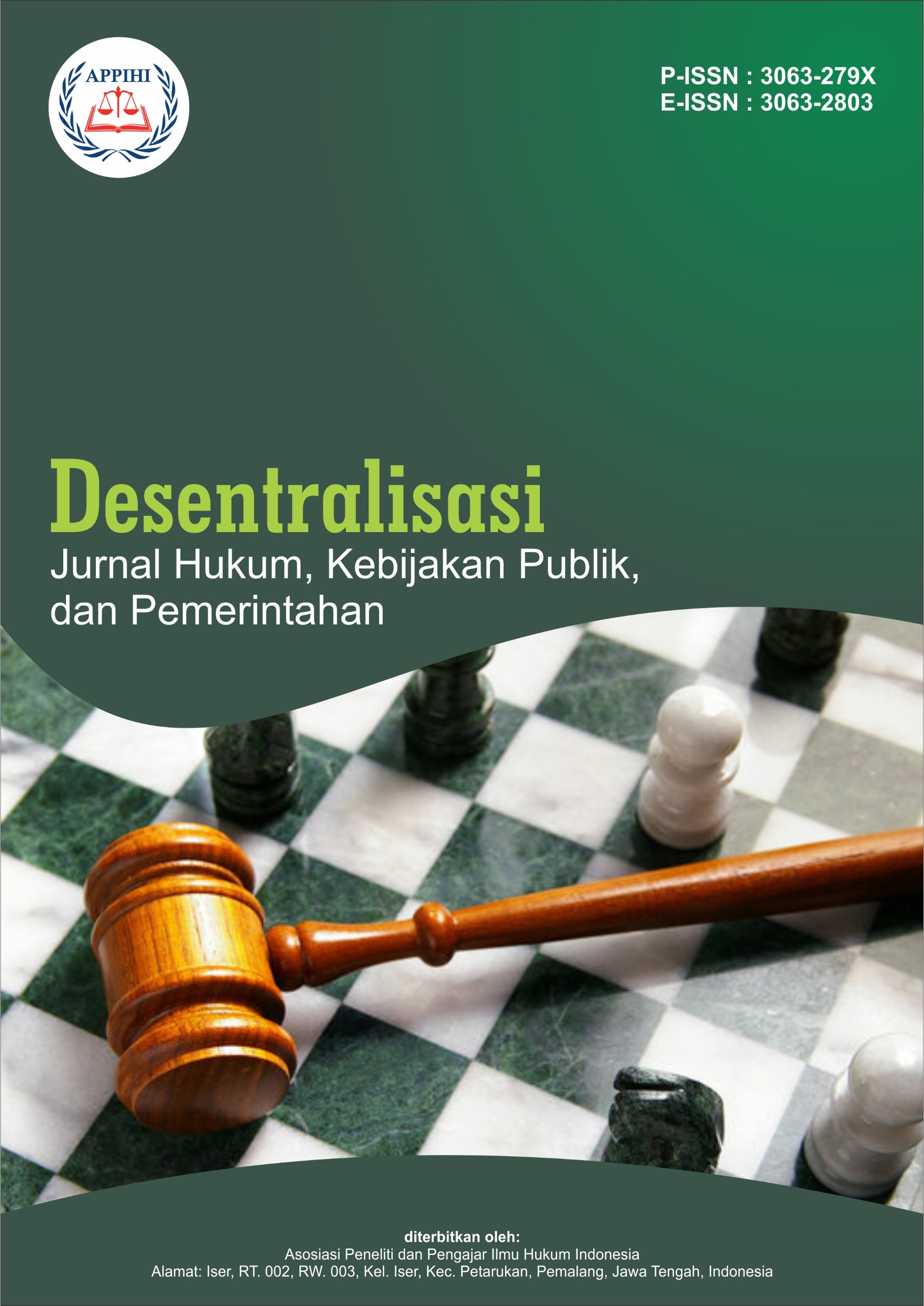Kontribusi Pidana Adat terhadap Pengembangan Sistem Keadilan Restoratif di Indonesia
DOI:
https://doi.org/10.62383/desentralisasi.v1i4.501Keywords:
Customary Crime, Restorative Justice, System DevelopmentAbstract
Customary law existed long before Indonesia became independent. This system is a reflection of the noble values believed in by indigenous peoples, such as mutual cooperation, kinship and respect for others. This research aims to analyze the principles of customary law that can be integrated into the formal justice system to support the development of a restorative justice system in Indonesia and the main challenges faced in implementing customary law as part of the restorative justice system in Indonesia and how to overcome them. The research method uses normative research methods and secondary data. Integration of customary law principles into the formal justice system can be done in various ways, such as adopting restorative principles, building hybrid models, increasing recognition of legality, involving communities, aligning with human rights, and applying local approaches in certain cases. The implementation of customary law as part of the restorative justice system in Indonesia faces various challenges, but with a strategic and adaptive approach, these challenges can be overcome.
Downloads
References
Anderson, L. M. (2021). The role of restorative justice in modern criminal justice systems. Journal of Restorative Practices, 15(1), 58–67.
Dewi, N. W. A. (2023). Hakim dalam sistem peradilan pidana di Indonesia: Fungsi dan peranannya. Jurnal Hukum dan Keadilan, 4(3), 245–257.
Flora, H. S. (2018). Keadilan restoratif sebagai alternatif dalam penyelesaian tindak pidana dan pengaruhnya dalam sistem peradilan pidana di Indonesia. Jurnal UBELAJ, 3(2).
Liebman, M. (2007). Restorative justice: How it works. Jessica Kingsley Publishers.
Lubis, A. F. (2022). Digitalisasi dan hukum adat: Pemanfaatan teknologi dalam dokumentasi hukum adat. Public Service and Governance Journal, 3(1).
Martha, R., & Lee, K. (2019). Revisiting restorative justice: Practices and reforms in various jurisdictions. The Restorative Justice Review, 8(2), 103–115.
Ramadhani, G. S., & Nawawi, A. P. B. (2012). Sistem pidana dan tindakan double track system dalam hukum pidana di Indonesia. Diponogoro Law Journal, 1(4).
Rinaldi, F., dkk. (2024). Dinamika konflik antara hukum adat dan hukum positif di era globalisasi. JLEB: Journal of Law Education and Business, 2(2).
Simbolon, C. I. (2024). Implikasi sejarah hukum bagi pembentukan sistem hukum di masa depan. Jurnal Sains Student Research, 2(5).
Stewart, M. C., & Jones, L. M. (2022). Customary law and its role in contemporary legal systems. International Journal of Law, Culture, and Society, 6(4), 184–193.
Tamrasari, D. (2002). Pendekatan hukum adat dalam menyelesaikan konflik masyarakat pada daerah otonom. Jurnal Kriminologi Indonesia, 2(I).
Windia, W. P., et al. (2020). Bunga rampai APHA Indonesia: Melihat COVID-19 dari perspektif hukum adat. Journal of Indonesian Adat Law (JIAL), 1(1).
Žemaitėlytė-Ivanavičė, I. (2020). The confrontation of education and customary law at school: The case of Roma. Journal of Education Culture and Society, 11(2).
Zulfa, E. A. (2010). Keadilan restoratif dan revitalisasi lembaga adat. Jurnal Kriminologi Indonesia, 6(II).
Downloads
Published
How to Cite
Issue
Section
License
Copyright (c) 2024 Desentralisasi : Jurnal Hukum, Kebijakan Publik, dan Pemerintahan

This work is licensed under a Creative Commons Attribution-ShareAlike 4.0 International License.






